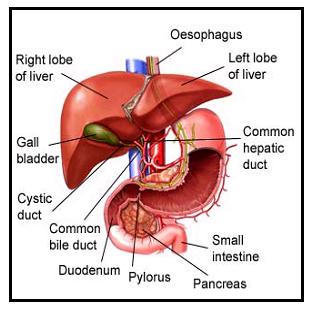Liver Ultrasound
A liver ultrasound can uncover abnormalities, but it will most likely preclude more function tests and perhaps a biopsy. Some people may search the web under "ultrasound of liver". It is the largest gland in the body, which is on the right side under the lower ribcage. It weighs about 3 pounds and is reddish-brown. It has two sections called lobes. The liver helps to digest and process food by secreting bile. It is important to metabolize protein, chemicals and carbohydrates. It filters blood and its proteins are important in blood clotting.

The test is usually performed in the x-ray department of a hospital or in an outpatient clinic. An ultrasound
See what it is
is a painless procedure that can be done in a half hour. What should you wear? A two piece outfit so your can expose the right half of the abdomen. A clear gel is applied to the skin and will feel cold at first. A transducer
see how it works page
is placed on the skin and is moved around the area to obtain ultrasound images. It will show if the liver is healthy or if it has surface anomalies. It may also show if there is a change in the density of an area inside of it. A change in the density will change the echo coming back to the computer and that may be a sign of other conditions that might be abnormal. Concerned with safety? To find out about it, click to
Ultrasound safety

This is a normal liver image
Some liver conditions are:
Hepatitis: Inflammation of the liver
Cirrhosis: Long-term damage to the liver from any cause can lead to permanent scarring, and the liver will work well.
Liver failure: A transplant is needed
Gallstones: If a gallstone becomes stuck in the bile duct draining the liver, hepatitis may result.
Consult with your doctor about other conditions and problems. This site is not to diagnose, but to inform about the use of
liver ultrasound. Back to types of ultrasound
Genesis ultrasound machine Home Page
Thanks to Cleveland Clinic




